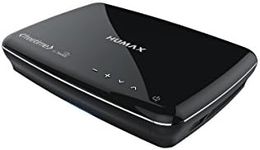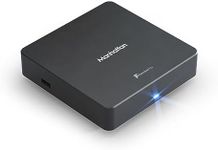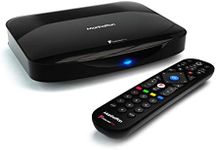We Use CookiesWe use cookies to enhance the security, performance,
functionality and for analytical and promotional activities. By continuing to browse this site you
are agreeing to our privacy policy
Best Digital TV Recorders
From leading brands and best sellers available on the web.#2

HUMAX
HUMAX FVP-5000T 500 GB Freeview Play HD TV Recorder - Black
View Product
#3

Panasonic
9%OFF
Panasonic DMR-PWT550EB Blu-Ray Player and HDD Recorder with Freeview Play, Black
View Product
#4

HUMAX
HUMAX HDR-1100S 500 GB Freesat with Freetime HD TV Recorder - Black
View Product
#5

Panasonic
18%OFF
Panasonic DMR-BWT850EB Smart Network 3D Blu-ray DiscTM Recorder with Twin HD - Black
View Product
#6

BT
BT Youview+ Set Top Box with Twin HD Freeview and 7 Day Catch Up TV, No Subscription
View Product
#7

Panasonic Bundle
9%OFF
Panasonic DMR-BWT850EB 1TB MULTIREGION Blu-ray and Freeview Play Recorder
View Product
#8

Panasonic
Panasonic DMR-EX97EB-K DVD Recorder (MULTIREGION PLAYBACK) with Freeview HDD and 500 GB HDD Inc. Maxell P-11
View Product
#9

Manhattan
Manhattan T4 Freeview Play 4K TV Box, Black
View Product
#10

Manhattan
24%OFF
Manhattan T3-R Freeview Play 4K Smart Recorder 1TB
View Product
Buying Guide for the Best Digital TV Recorders
Choosing the right digital TV recorder can greatly enhance your viewing experience by allowing you to record, pause, and rewind live TV. To make the best choice, consider your viewing habits, the types of shows you watch, and how often you record programs. Understanding the key specifications will help you find a model that fits your needs perfectly.Storage CapacityStorage capacity refers to the amount of space available to store recorded programs. This is important because it determines how many hours of TV you can record. Storage is usually measured in gigabytes (GB) or terabytes (TB). If you watch and record a lot of high-definition content, you will need more storage. For occasional recording, a smaller capacity might suffice. Generally, 500GB can store around 300 hours of standard definition content or 125 hours of high definition content.
Number of TunersTuners are the components that receive TV signals. The number of tuners in a digital TV recorder determines how many channels you can record simultaneously. If you often find yourself wanting to record multiple shows that air at the same time, look for a recorder with more tuners. A single tuner allows you to record one channel at a time, while dual tuners let you record two channels simultaneously. Some advanced models offer even more tuners for greater flexibility.
User InterfaceThe user interface is the way you interact with the digital TV recorder, including menus, remote control, and on-screen guides. A good user interface is intuitive and easy to navigate, making it simple to schedule recordings, find shows, and manage your library. If you are not tech-savvy, look for a recorder with a straightforward and user-friendly interface. Advanced users might prefer more customizable options and features.
Connectivity OptionsConnectivity options refer to the ways you can connect your digital TV recorder to other devices, such as your TV, internet, or external storage. Common connectivity options include HDMI, USB, Ethernet, and Wi-Fi. HDMI is essential for high-definition video and audio. USB ports allow you to connect external storage devices for additional space. Ethernet and Wi-Fi enable internet connectivity for streaming services and software updates. Choose a recorder with the connectivity options that match your setup and needs.
Recording QualityRecording quality determines the resolution and clarity of the recorded content. Higher quality recordings take up more storage space but provide better viewing experiences. Standard definition (SD) is sufficient for older TVs and less demanding viewers, while high definition (HD) offers better picture quality for modern TVs. Some recorders also support 4K Ultra HD for the highest resolution available. Consider your TV's capabilities and your preference for picture quality when choosing the recording quality.
Smart FeaturesSmart features include additional functionalities like streaming apps, voice control, and integration with smart home systems. These features can enhance your viewing experience by providing more ways to access content and control your recorder. If you enjoy using streaming services like Netflix or Hulu, look for a recorder with built-in apps. Voice control can make navigation easier, and smart home integration allows for seamless operation with other devices in your home.




